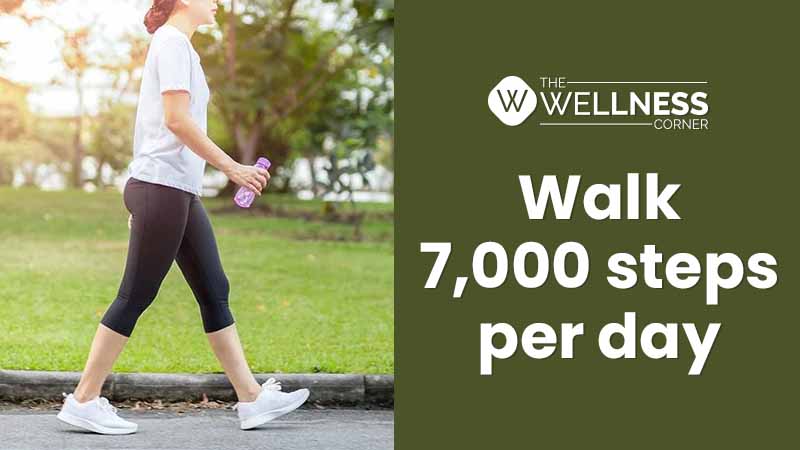7,000 Steps A Day Cuts Risk of Heart Disease
- 17 months ago
Walking represents an essential component of everyday physical activity. It is safe for cardiac patients and decreases both overall and cardiovascular disease and mortality rates. Astride meter-monitor walking activity and can be used as a motivator to maintain a high physical exercise. Walking 7,000 steps every day during midlife can help maintain healthy arteries and reduce the risk of cardiovascular disease.
According to the study, "raising steps per day among the least active segment of the population may bring a mortality advantage". According to the analysis, 7,000 steps per day are adequate to safeguard against heart issues, rather than the generally advised 10,000 steps per day. The research examined middle-aged and older adults aged 38 to 50 and discovered that those who walked 7,000 steps per day were less likely to develop cardiovascular disease.
What do the national guidelines suggest?
Due to the low number of researches proving the prospective correlations of step volume and intensity with health outcomes, including morbidity, national guidelines for physical activity never include step counts as a global health objective. The majority of observational studies on steps and mortality have samples of older people. Still, few studies include adults early in their lives or different racial groups.
Physical activity has significant health advantages for various illnesses, including cardiovascular disease and a variety of malignancies, as well as enhancing the standard of living. An individual should engage in moderate-intensity activity, according to the World Health Organization (WHO). According to a study conducted in Norway, boosting step count can cut death rates among the unfit by up to 57 percent. Experts say this study could have significant clinical consequences, and continuous surveillance systems could become a helpful tool in preventing and managing chronic health disorders.
What are the recommendations for physical activity?
The American Heart Association (AHA) recommends the following physical activity guidelines:
- Get 150 minutes of moderate-intensity aerobic exercise every week, such as walking.
- On at least two days each week, incorporate moderate- to high-intensity muscular exercises such as resistors or weightlifting.
- Gradually increase the volume and intensity of your workouts.
- Another option is to engage in 75 minutes of intense cardiovascular activity per week, including jogging, uphill trekking, and rowing.
- Sit for shorter durations. Sometimes light-intensity exercise can help to mitigate some of the dangers of sedentary behavior.
- You can work out on a set schedule or whenever you have time in your day or a mixture of both.
Raising your heart rate is essential for improving cardiovascular fitness and may be accomplished through a range of activities. Every exercise is a perfect way to start, and before you recognize it, it becomes part of your routine.
What are some examples of moderate-intensity activities to start?
To begin, consider the following moderate-intensity activities. Choose one or more than you prefer and arrange it up in your daily routine.
- Horticulture
- Brisk walks at least 2.5 miles per hour
- Moderate jog at least 2.5 miles per hour
- Dancing
- Tennis
- Aerobics in the water
- Cycling at speeds slower than 10 miles per hour.
When you're prepared for more exercise, consider one of the following activities:
- Cycling at a speed of ten miles per hour or more
- Practice sessions of swimming
- Continuous digging or hoeing of yard work
- Rope-jumping
- Hiking with a big load or uphill
- Running
If statistics and step tracking isn’t your thing, follow the AHA's central piece of professional advice: exercise more, with greater intensity, and rest, less.








